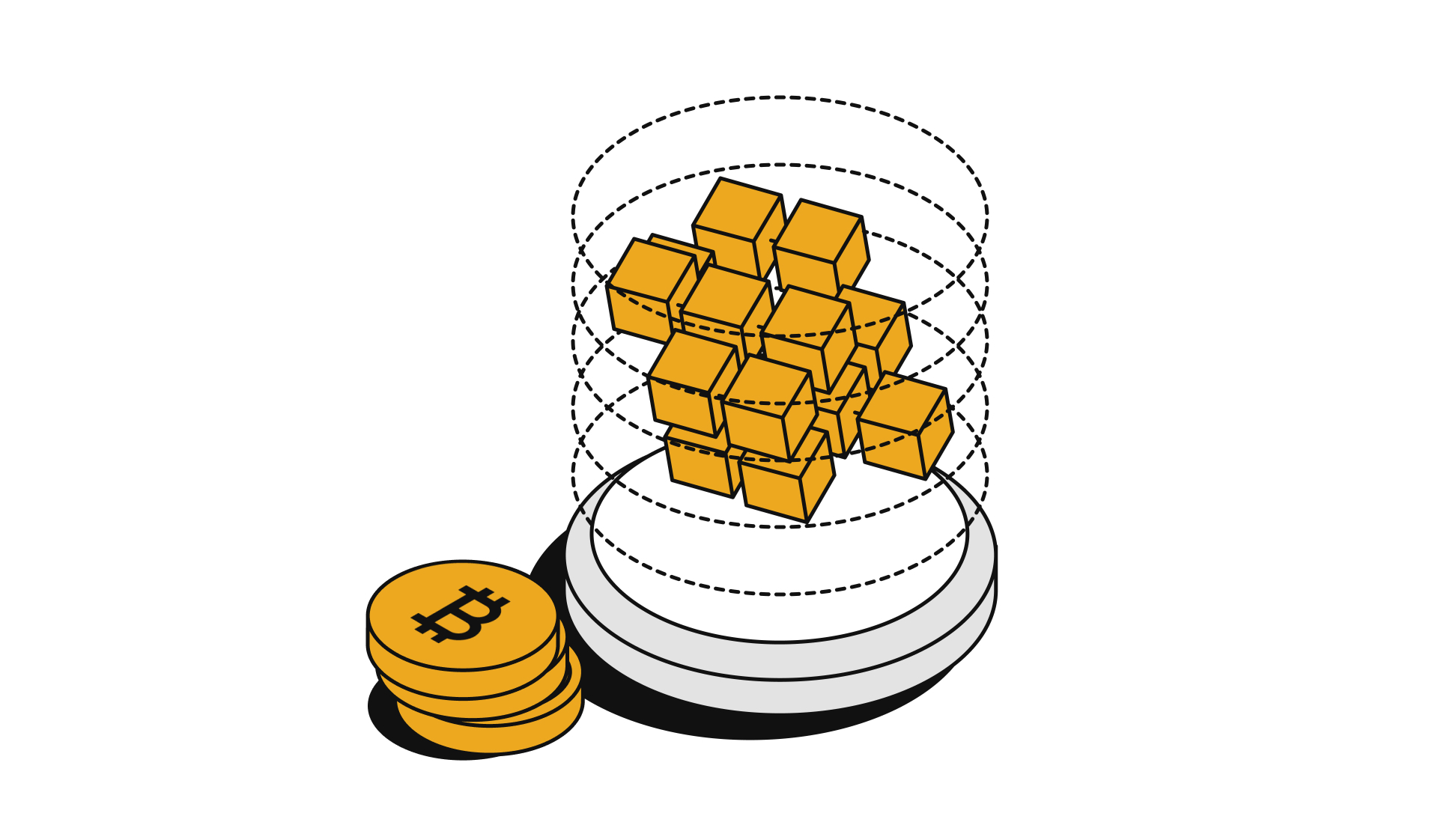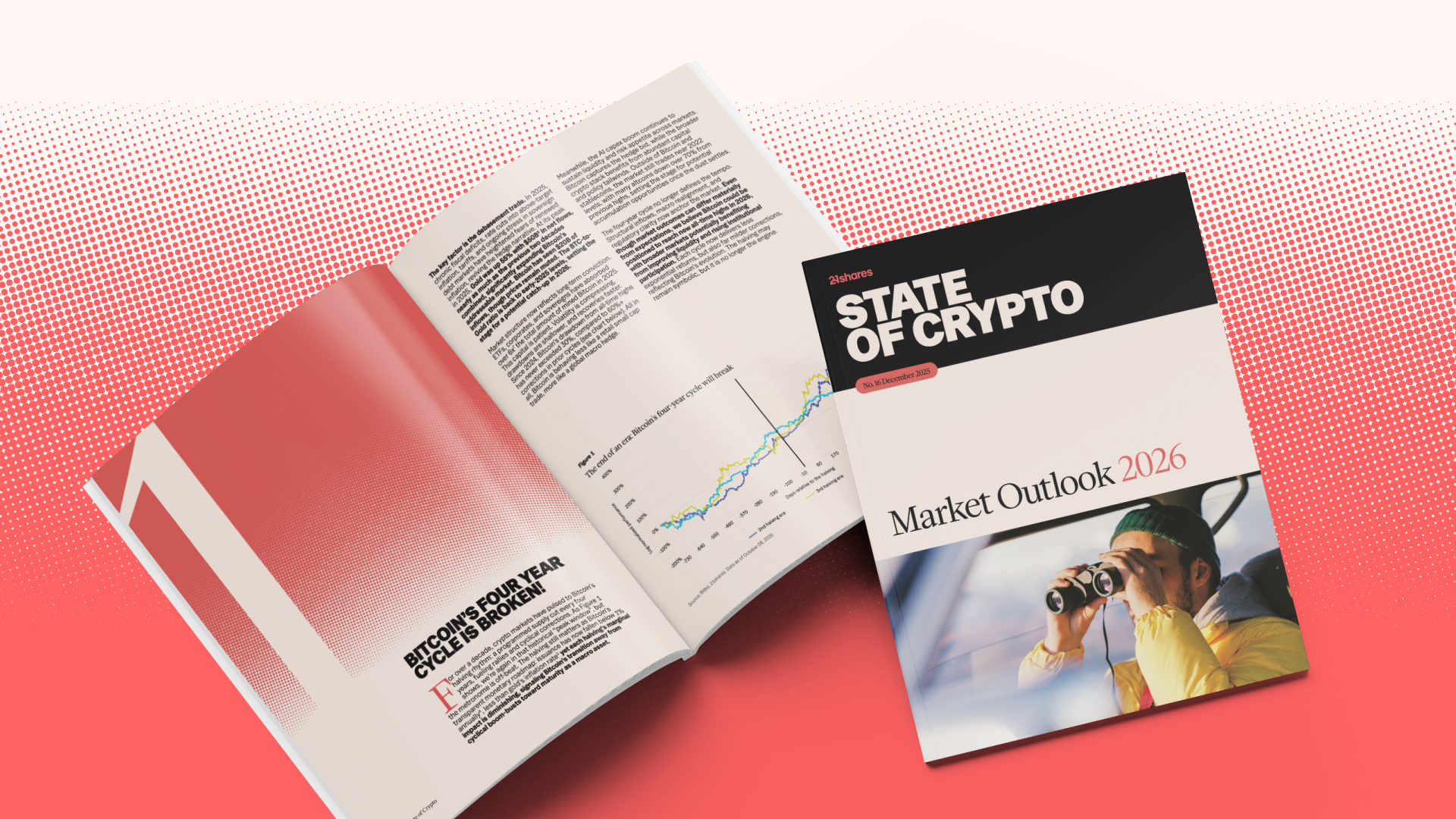Crypto Market Woes, Bitcoin’s Impact, and EU Funding Boost
.jpg)


Market Outlook
The last week has been an extremely difficult one for the crypto asset market, with Bitcoin briefly hitting below $7,000 on Monday, 25 November. It has been argued that the driver of both positive and negative market volatility over the last month has primarily been the market's changing sentiment on the likely impact of China's recent policy decisions — BTC (-12.76%), ETH (-17.69%), XRP (-13.01%), BCH (-15.30%), and LTC (-18.07%).
Surprisingly, despite the further market downturn, adjusted daily transaction volumes for the top five crypto assets increased from an average daily total of $2.21B to $2.63B. This is perhaps a reflection of an increase in on-chain transactions as a response to transfers of capital to facilitate hedging and short-selling by traders — BTC ($2.07B), ETH ($318M), XRP ($86.9M), BCH ($129M), and LTC ($25.5M).
Research - The Environmental Impact of Bitcoin
In this week's State of Crypto podcast, the 21Shares team discussed the environmental impact of Bitcoin. One point that the team found especially interesting was the effect of seasonal changes on Bitcoin mining. Some have argued that Bitcoin is mostly powered by renewable sources — namely hydroelectric power. In turn, hydroelectric power is subject to seasonal trends as much more is generated during damp seasons than dry seasons, for example.
Therefore, if we take for a given that Bitcoin is mostly powered by renewable sources such as hydroelectric power, we may expect mining to be influenced by seasonality. To investigate, we looked at estimated hashrate data as provided by Blockchain.com; the graph below shows the Month-on-Month change in estimated hashrate for Bitcoin in 2017, 2018, and 2019.
As one can see, there is not a noticeable seasonal trend for the Month-on-Month change in Bitcoin's estimated hashrate in any of the three years we looked at. May to September is considered to be the wet season in Sichuan, the Chinese region where the largest proportion of Bitcoin mining in the world is said to occur, and October to April is considered the dry season — however, there is no trend linked to the two seasons which can be gauged from the estimated hashrate figure.
Note that this fact in-of-itself does not necessarily confirm or refute the fact that Bitcoin mining is subject to seasonality — and therefore that it may be primarily powered by renewables or not. As we've noted, one can only estimate the Bitcoin network's hashrate through the use of its current difficulty and the average time between the creation of new blocks in the Bitcoin blockchain. The chart below shows the probability density function of Bitcoin's block times which is a key component needed to estimate Bitcoin's hashrate.
It is extremely difficult to accurately ascertain Bitcoin mining's energy mix or how said energy mix may change over time as the ecosystem is driven by a wide range of micro- and macro-economic factors — not all of which can be accurately estimated without precise data from all of those who participate in the industry. In the last few days, news has come out of new Bitcoin mining farms in Russia whose operations may drastically change the energy mix of the wider industry. It is without a doubt true that renewable energy does power some Bitcoin mining activity but this is simply in cases where it makes economic sense to do so — and is not reflective of consistent practices.
As our co-founder and president Ophelia points out, however, when we evaluate the costs and benefits of Bitcoin mining, it is important to consider it within an overall Environmental, Social, and Corporate Governance (ESG) framework wherein the environmental impact of Bitcoin is only one part of a larger consideration of the social effects (positive or negative) of the crypto asset.
Podcast - The Environmental Impact of Bitcoin
This week, the 21Shares team (Ophelia Snyder, Lanre Ige and Hansen Wang) came together to shed some new light on the old problem of Bitcoin’s energy consumption. One of the main arguments of opponents of Bitcoin's use of proof-of-work mining is the excessive amount of electricity needed to secure the Bitcoin system. However, there are arguments to suggest that Bitcoin could also give society significant benefits by helping "bank the unbanked" and give billions of people access to financial markets, which the traditional financial has thus far failed to do. So does this added benefit outweigh the additional costs? Tune in to hear our views.
Reading from this week: Coinshares Research – "Bitcoin Mining Network Update"; MIT Center for Energy and Environmental Policy Research — "The Carbon Footprint of Bitcoin"; Vox Media — "Bitcoin is an energy hog. Where is all that electricity coming from?"
You can listen to the episode on Spotify or Apple Podcasts.
News - EU Launches Estimated €400M Blockchain, AI Fund to Avoid Lagging US, China | CoinDesk
What Happened?
The European Investment Fund (EIF) — an EU agency set up to indirectly fund SMEs — and the European Commission have together put up €100 million (over $110 million) for a dedicated investment scheme that will make capital available to AI and blockchain projects via VC funds or other investors, they announced in a blog post on Wednesday. With the "cornerstone" funding in place, the EIF said private investors are expected to bring up to €300 million ($331 million) into the fund, while the total could rise further from next year, with national promotional banks being able to co-invest under the scheme.
Sifted reports that the fund could ultimately raise up to €2 billion ($2.2 billion) under the InvestEU Programme. According to the post, the EU already spends plenty on blockchain (expected spending for 2019 is $674 million), but that is mostly directed toward research and proof-of-concepts.
Why Does This Matter?
A growing trend over the last year has been efforts by nations such as the United States or China to take an active role in promoting and facilitating innovation and business in key areas such as artificial intelligence and blockchain technology. This can be seen in the context of some in the academic sphere that have argued that, historically, governments have had an extremely important role in technology innovation — for example, the United States Defense Advanced Research Projects Agency (DARPA) had a hand in the creation of ARPNET, the predecessor to the internet, GPS, and played roles in the formative technologies that led to inventions like Siri, Unix, and Google Maps.
On this premise, it would be reasonable to expect that governments may have an important role to play in the development of blockchain technology and crypto assets — initiatives like China's digital currency and suggestions of a similar initiative in Europe certainly give credence to that. However, the fact that the crypto asset industry has generally been predicated on a deep skepticism of state involvement and governments in general certainly complicates matters — what initially attracted people to Bitcoin was the ability it gave people to transact value without requiring the consent of a trusted third party like a central bank or government. It is unclear how one can square the ideological tension between the industry's libertarian roots and the ability of governments to help spur innovation, though we can expect the launch of state-run digital assets in the next few years to bring that debate to the center stage of discussions within the industry.
The chart below shows the total estimated spend of the US, EU, and China on blockchain-related initiatives according to data from the International Data Corporation. As we can see, the United States is the leader in blockchain spending with an estimated $1.1 billion in 2019 compared to $661 million in Western Europe and $304 million in China — though we can imagine both Western Europe and China catching up due to their large government initiatives in the space.
Learn more here.
News - Bakkt to Launch Cash-settled Bitcoin Futures Next Month in Singapore | The Block
What Happened?
Bakkt, a provider of physically-settled bitcoin futures contracts, has officially announced the launch of cash-settled bitcoin futures. Bakkt will offer the new product via Intercontinental Exchange (ICE)’s Singapore unit and plans to list it on Dec. 9, according to an announcement last Thursday.
The unit, ICE Futures Singapore, will list Bakkt Bitcoin (USD) Cash Settled Monthly Futures contract, while ICE Clear Singapore will clear it, both regulated by the Monetary Authority of Singapore. “Our new cash settled futures contract will offer investors in Asia and around the world a convenient, capital efficient way to gain or hedge exposure in bitcoin markets,” said Lucas Schmeddes, president and COO of ICE Futures and Clear Singapore.
Why Does This Matter?
While physically-settled futures products may offer a better option for market participants who want an effective way to hedge their Bitcoin exposure, cash-settled futures also have an important role in the market as can be seen by the growth volumes for CME's cash-settled futures products since their launch in 2017 — as we show below (Source: Skew).
Bakkt's foray into the same futures market as CME's represents an effort by them to use their infrastructure to offer a wide range of products for crypto asset investors, from custody to futures, and will act as an important competitor to CME's futures, especially since CBOE's futures offering was discontinued. It is interesting to note that Bakkt's physically-settled futures have continued to gain traction in the last few weeks (as shown by the chart below), potentially as more investors seek to hedge their long positions in Bitcoin especially during the recent downturn (Source: Skew).
Learn more here.
News - Blockchain Sleuthing Firm Chainalysis Slashes 20% of Workforce | CoinDesk
What happened?
Chainalysis laid off 39 employees last Thursday, about 20 percent of its workforce, as the startup prioritizes turning a profit and bringing products to market. These across-the-board cuts eliminated positions in nearly every corner of the blockchain analysis firm, said Maddie Kennedy, Chainalysis’ director of communications. The research and development team saw the most cuts.
The company's total headcount is now 155. The downsizing will help put the five-year-old Chainalysis on the “path to profitability,” Kennedy said, allowing the company to shift resources into product teams and a go-to-market strategy.
Why does this matter?
Throughout the crypto asset downturn of 2018, there was a slew of announcements of layoffs from firms like Consensys and Steemit and given the general uncertainty on the short term outlook of the market, it's understandable that a firm like Chainalysis may be orientating itself more towards profitability by cutting costs. News of layoffs is always unfortunate and perhaps perplexing in Chainalysis' case given that they have raised over $36 million this year from a range of investors.
Outside of directly exchange- or trading-related businesses, it can often be hard for startups within the space to find concrete business models and this has been a general issue especially within venture-backed data-analytics companies within the industry; however, there is a general intuition that the crypto data analytics space does have the potential of creating the next industry giant — whether the firm is more on the public financial data side (such as Messari or CoinMetrics) or more on the market-surveillance side (such as Chainalysis, Elliptic, or TRM Labs).
Learn more here.
Disclaimer
The information provided does not constitute a prospectus or other offering material and does not contain or constitute an offer to sell or a solicitation of any offer to buy securities in any jurisdiction.
Some of the information published herein may contain forward-looking statements. Readers are cautioned that any such forward-looking statements are not guarantees of future performance and involve risks and uncertainties and that actual results may differ materially from those in the forward-looking statements as a result of various factors.
The information contained herein may not be considered as economic, legal, tax or other advice and users are cautioned to base investment decisions or other decisions solely on the content hereof.

.jpg)














